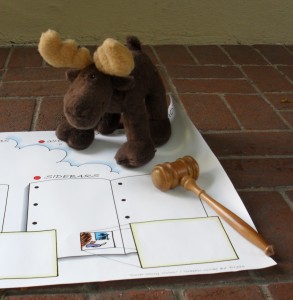 Are your meetings extreme enough? Extreme meetings get people thinking, involved, and acting—which leads to better results.
Are your meetings extreme enough? Extreme meetings get people thinking, involved, and acting—which leads to better results.
What makes a meeting extreme? Advance planning, active involvement during the meeting, and post-meeting follow-up.
Taking these three actions doesn’t take a lot of time and resources in the whole scheme of things—just commitment, attention to details, and discipline. Nonetheless, these three actions are missing all too often. And without them, most meetings become banal, boring, and barren.
In my experience, one of the best times to remix your meetings is when you’re implementing a change initiative. Altering your meetings signals that you’re serious about making changes. Plus, your new way of conducting meetings can better support the change you’re trying to instill.
For example, if you’re encouraging more collaboration as part of your change initiative, start allocating meeting time for people to do joint problem-solving or some other goal-oriented activity. Stop going around the room asking people to report out items of interest that people can read on their own.
Why am I so passionate on this topic? Life is too short to suffer through bad meetings. Furthermore, wasting people’s time at poorly run meetings is disrespectful.
Like most people active in business, professional associations, and non-profit work, I spend a lot of time in meetings. I also facilitate a number of meetings, often using my Silent, Sugarcoated Moose® tool to help people speak truth to power, live their values, and build greater trust.
Over the years, I’ve facilitated as well as participated in many extreme meetings that are polar opposites yet got great results. Recently, I experienced two extreme meeting types in the same day. The juxtaposition was jarring, but invigorating —especially when they both teach great lessons.
At one end of the spectrum, David Sibbet, founder and president of The Grove Consultants International, spoke to the San Francisco chapter of IABC about the power of visual meetings. To some extent, David role modeled as well as lectured about how visual meetings combine structure with improv to get people more productive.
The visual meeting, as invented by David, can transform the way groups work. In fact, David’s latest book, which I named to my 10 great business books of 2010, is Visual Meetings: How Graphics, Sticky Notes and Idea Mappings Can Transform Group Productivity. (I’m also proud to say David is a fellow alum of Northwestern University, which pioneered improv theatre that seems to have influenced his work.)
At the other end of the spectrum, I received a special request from the coordinator of the parliamentary procedure competition for the 2011 California state conference for FBLA (Future Business Leaders of America). He asked if I would serve as the lead judge, to which I agreed. (I’m a registered professional parliamentarian through the National Association of Parliamentarians and participated in this contest in high school on the state and national levels.)
During the California state competition, which will take place on April 15, a team of four to five students will conduct a mock meeting using proper parliamentary procedure. We three judges will assess how well they follow Robert’s Rules of Order, Newly Revised as the official parliamentary authority. In particular, they must incorporate specific types of motions in their meeting, including the surprise problem they’re handed just minutes before they take the stage.
While this mock meeting with all of its formal structure is not anything you want to duplicate in the business world today, it does feature some of the same sound meeting principles found in David’s visual meetings. These include:
- Outcomes
- Agenda
- Roles
- Rules
As David Sibbet, the inventor of visual meetings, says: think and practice OARRS. And from General Henry M. Robert’s of Robert’s Rules of Order fame, remember to be courteous to all, focus on one big issue at a time, and work to expedite business.
What are you doing to improve your meetings? And are you working enough at the extreme edges?

I think you left out my favorite trick for keeping meetings interesting – make them short! If they must run longer than 45 minutes, be merciful and have a break so people can grab a glass of water, collect their thoughts, etc.
Nice Post, this is important to write about – We as facilitators need to up our game.
I wrote today about facilitators giving our clients the permission to create when presenting data. Graphics are one way, but not everyone can draw like David can. Other possibilities are: skits, poems, songs and improv. Designed well these can go a long way to move meetings to the “Xtreme” you describe. Check it out: http://goo.gl/kBr2E
Thanks for the comments. Yes, short meetings can be effective. Andy, you really like brief meetings! Some people push back when I limit meetings to 90 minutes, yet you prefer half of that! Good for you. Sometimes, though, especially when you’re bringing people together from different geographies to plan or tackle tough issues, you need more time. That’s when you especially need to pay careful attention to your meeting design. Robert, I enjoyed your post about how people rose to your challenge to present data creatively. No need for a wake up call when the data’s done! Great work!